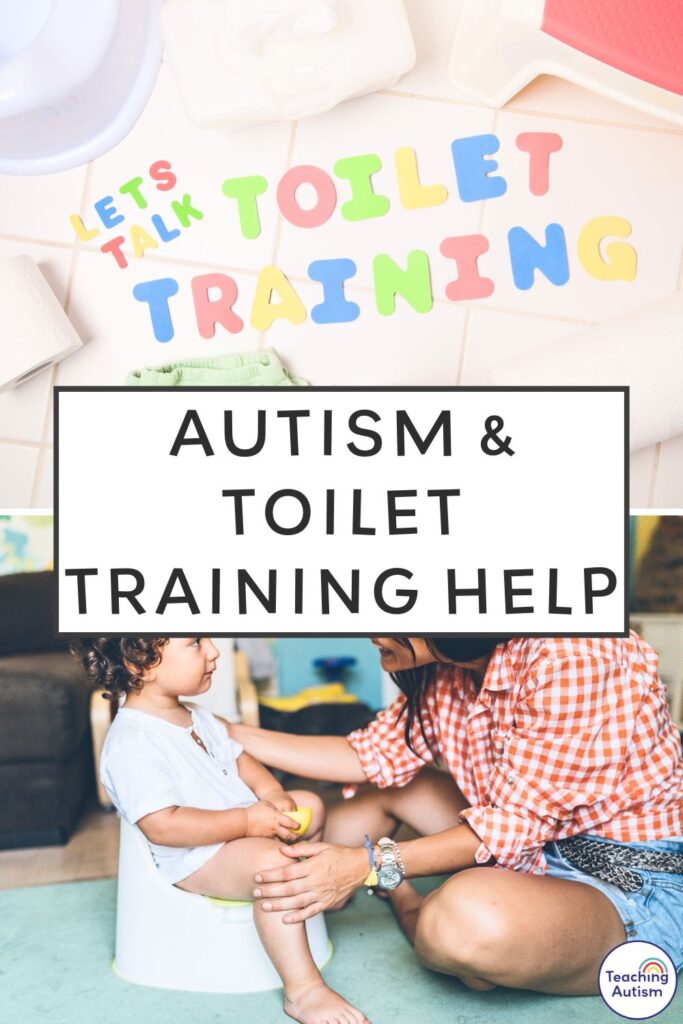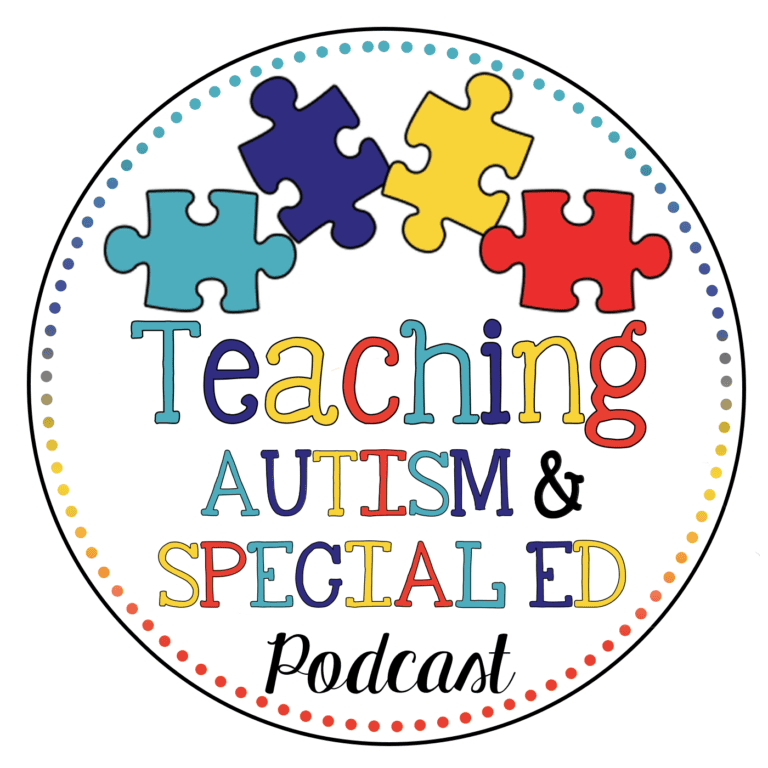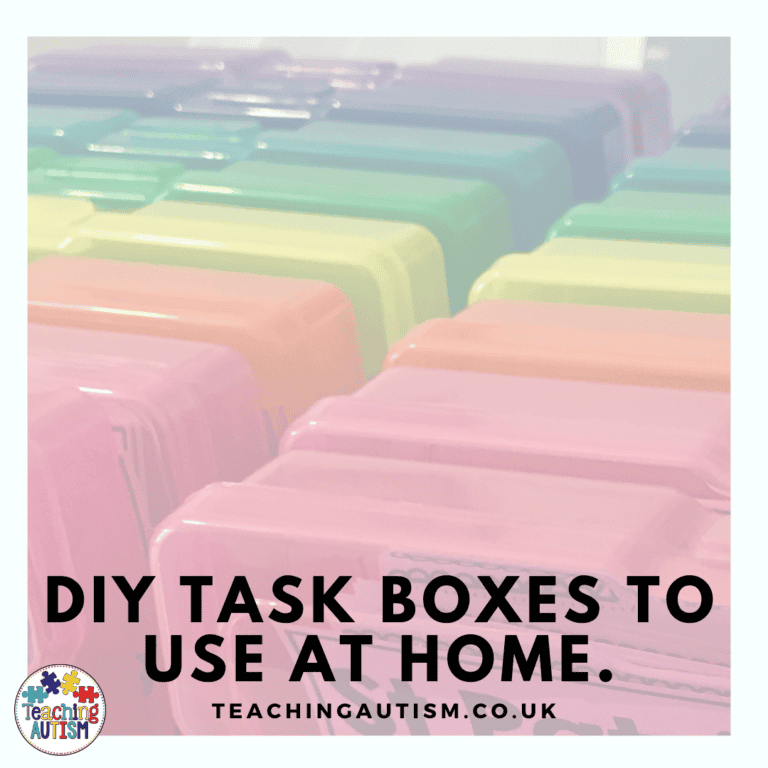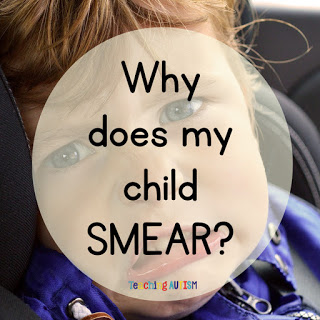Autism and Toilet Training Tips and Information
Today we’re talking all things autism and toilet training. If you’ve found yourself on this page, it’s probably because you’re struggling right now to help your autistic child or student get toilet trained. Or, you may be wanting to find out more on the topic and you’re preparing yourself with information.
You may have bought all the toilet training books. Or, you’ve read all the online journals. You’ve probably spoken to all your parent friends. And you’ve heard all of the myths. However, your child still isn’t toilet trained.
Take a step back. Calm yourself down and take a deep breath. Take a look at the situation in a whole new light. Do not use milestones that people put out there. Don’t compare your child to anyone else. And don’t think that the reason they’re not toilet trained is because of you.
Toilet training can be hard for any child. But, for our children diagnosed with autism it can be even harder.
Today, I’m sharing some tips that I have picked up over the years working with my autistic students. This is not a training manual. And these tips may not work for your child. Every child is different, and that’s especially true in our world. So, although these tips may not work for you. They may work for someone. And if I can help even one person with their toilet raining, that’s definitely worth this post.
This blog post may contain affiliate links. This means that if you purchase an item through my affiliate link, I may receive a % of commission at no extra cost to you. This helps support me, my family and my blog to bring you great content for free!
Starting Point
When starting toilet training, you first need to ask yourself. Does your child recognise when they need to go to the toilet? And when they have actually gone to the toilet?
Now, look at the timing. Is this a good time to start toilet training? Do you have a busy period of time coming up? Or lots of planned events like weddings, birthdays, holidays? Anything that would disturb your usual, natural routine. And would mean you not having full time access to a toilet and toilet training facilities. It’s best to start toilet training when you know you can be at home for a few days – or you have a non-disrupted routine for a short while.
If you want to do this during school time, just ensure that you can all work together – families at home and teachers in school. This way everyone is on the same track and providing a consistent approach for the child.
Starting toilet training is a big change for our children. Don’t be alarmed if you see any changes in mood, temperament or behaviour. This is a huge change and this can be challenging for our children to understand.
When you first start toilet training, it’s a good idea to start taking your child back and fore to the potty throughout the day. We start off with – sit on the potty to count to 10. Then, we up it to 20, and then 30. Just work your way up with your child. Make the whole routine work as well. Go to the potty. Wipe. Pull trousers up. Wash hands. Dry hands. Etc.
Non-Verbal
If your child is non verbal, symbols are a great support system for them to communicate with. Put the ‘toilet’ symbol in as many visible and reachable places around the area for your child to see. Put it on the door to the toilet, on a keyring on your trousers – or even on a keyring on their trousers. Make sure they have easy access to those symbols so they can request the toilet and you know what they need.
Sometimes, for many of our children, it is easier to go straight onto the toilet, rather than going to the potty/baby toilet first. Starting with a potty then moving to a toilet can mean too many extra changes, which can bring on stress and anxiety with some of our children. It’s ok to start straight onto a toilet, if you think this is appropriate.
Rewards
Rewards are a tough one. These can go down great for gibing to children when they use the toilet. However, you don’t want your child to start relying on rewards. And you don’t want them to think that they’ll receive a reward every single time that they go to the toilet. What I will say, is it is a huge achievement for our children when they go to the toilet. Don’t scald them if they start to go to the toilet in their pants/underwear. Encourage them to get to the toilet to finish. You don’t want to make them wary of doing something ‘wrong’ and starting to worry about going to the toilet. Lots of encouragement and praise.
On the flip side. Some of our children can’t cope with praise. So, bear all of this in mind when you’re thinking of a plan for your child. Rewards don’t need to be things like chocolate. They could be affection. Or getting a sticker to add to their reward chart.
Social Stories
Social stories are a great, visual resource to use with our children. Reading them together about using the toilet can help our children understand the process easier. This will help your child become more independent and understand what they need to do to go to the toilet. Here is the one that we use.
Coming out of nappies/pull-ups can be difficult for our children. These can be a form of comfort for many of our children. Something that makes them feel safe. So transitioning out of this, can be challenging.
Pants can also be a different experience for our children. The feel, texture and labels. Make sure the clothes are as your child likes them. Some of our children like loose fitting clothes, others like tight fitting. Bear this in mind when choosing what type of pants to get your child.
Keeping a Diary
One of the best pieces of advice that I was ever given, was to keep a diary of when the child goes to the toilet before starting toilet training. Do this over a few weeks. Look back and see if there any patterns that you can work on. For example, do they go to the toilet at the same times of day? Use these times to your advantage and these are when you will encourage your child to visit the toilet more often. It also helps to get them into a routine.
Night
Nighttime is probably the trickiest part of toilet training. It may be best for you to tackle day time training first, and continue to use pull-ups at night to start. This will help your child concentrate more on toilet training in the day and controlling their bladder.
Every child is different. If you feel that keeping on pull-ups at night will cause more issues for your child – don’t do it. Remember to tailor these tips to suit your individual child and their preferences.
In regards to bed time, I suggest cutting down on drinks before going to bed. Try not to provide your child with a beaker/cup of drink next to their bed. Especially if they are a comfort drinker. Take your child to the toilet before they go to bed. Even if they say they don’t need to go.
One of my biggest tips, always make sure to have lots of spare pants and clothes on hand when you’re toilet training. And I mean – a LOT of spares.
Sensory
Be understanding. Toilet paper may be an issue, so offer wet wipes instead. The toilet seat could also be an issue. They may want to clean it first. Or they may even be scared of the flushing noise. Some of our children are too small to get onto toilets comfortably, so provide them with steps to use.
If you are worried that there is something else going on regarding bladder control with your child, visit your GP. It may be something else, and it’s always better to be safe. Remember to work together with others so that everyone is being consistent and working on the same approach.
These tips are some of my personal favourite ones that I find work the best. They may not work for every child. As, unfortunately, we all know how different our children are to each other. Every child is different. What are your best tips for toilet training? Or what worked well for you? Share it with us below.
If you found this autism and toilet training post helpful, please consider sharing it with your friends on social media.
Toilet Training Essentials
If you are looking for some toilet training essentials, be sure to check out the links below as well as my Amazon shopping lists to make life easier when toilet training;
- Toilet Training Resource Pack
- Going to the Toilet Social Narrative
- Free Toilet Training Visual Poster
- Toilet Training Podcast Episode
- USA Amazon Shopping List
- UK Amazon Shopping List

P.S. Have you signed up for my VIP membership yet? If not, head on over and sign up now. You’ll get access to hundreds and hundreds of resources, templates, crafts and more being uploaded every month!
Nikki







